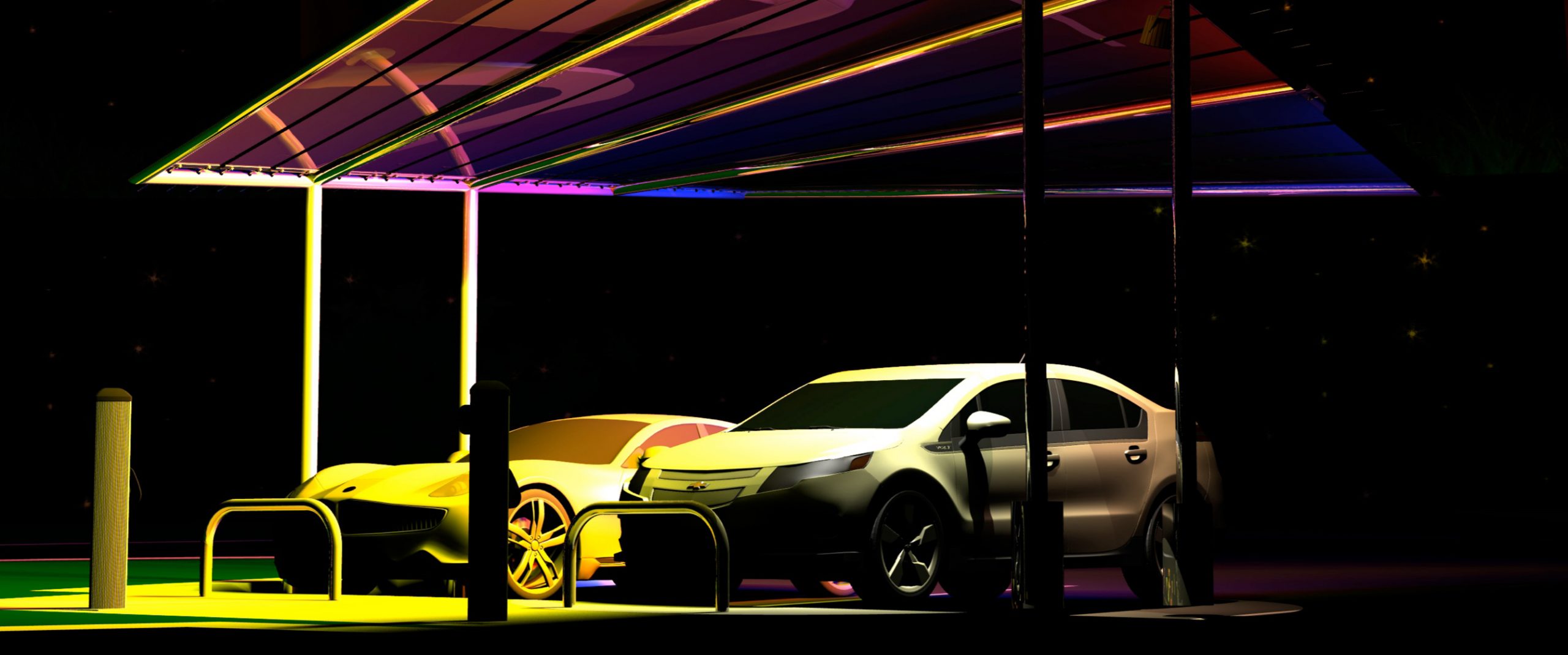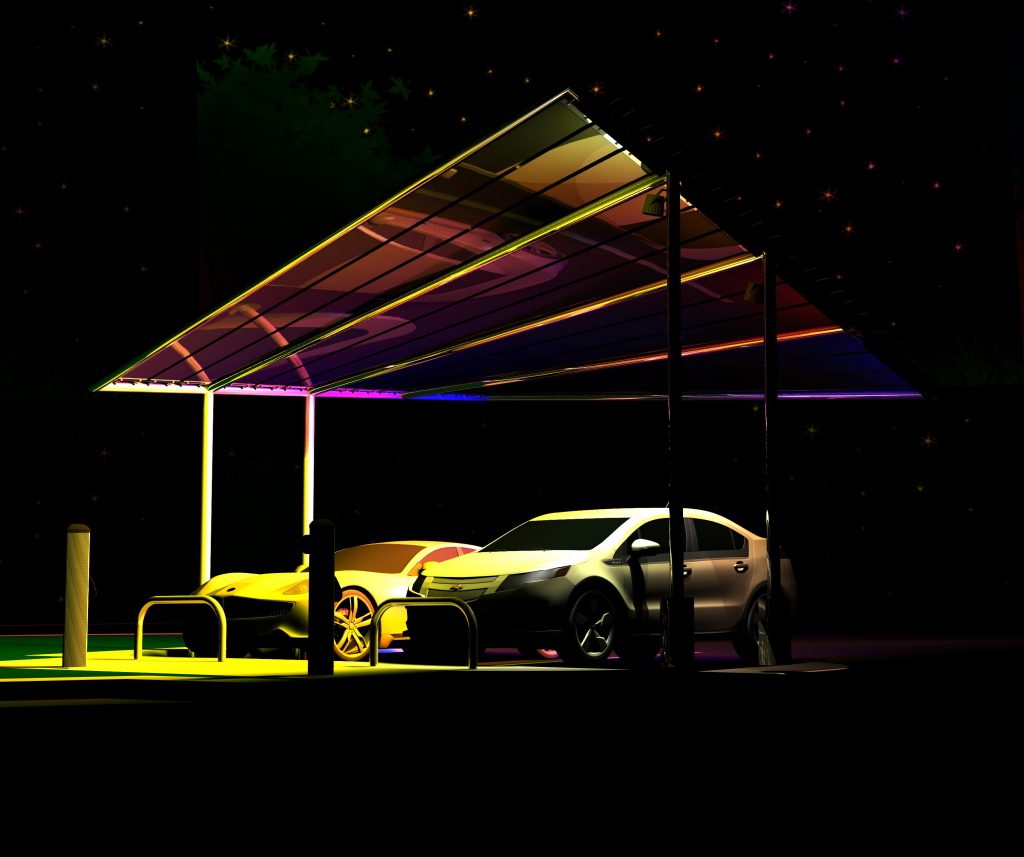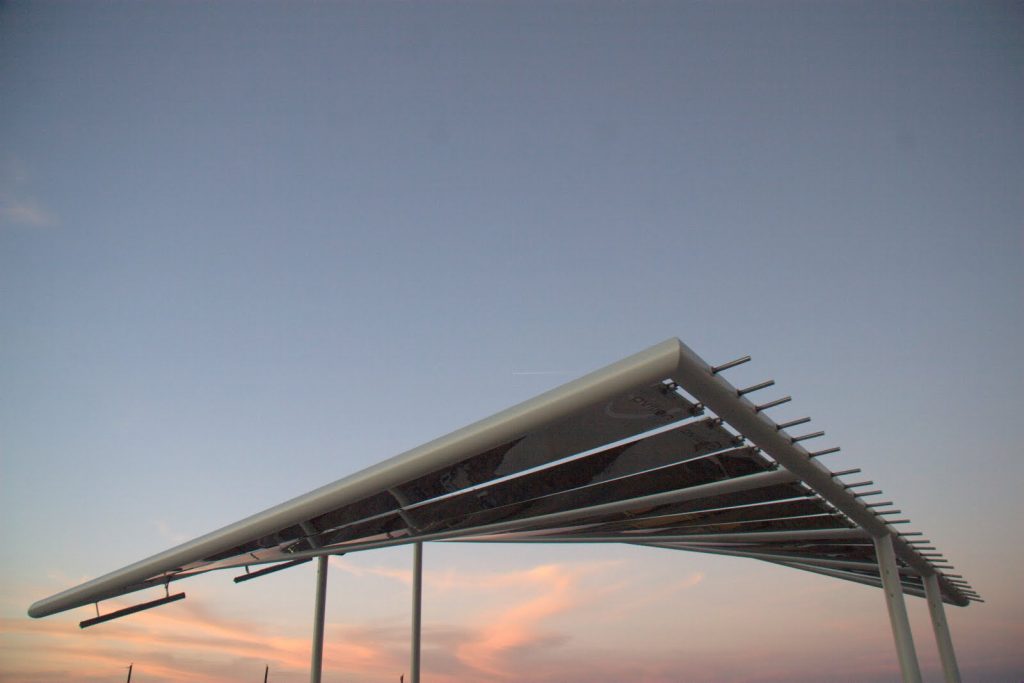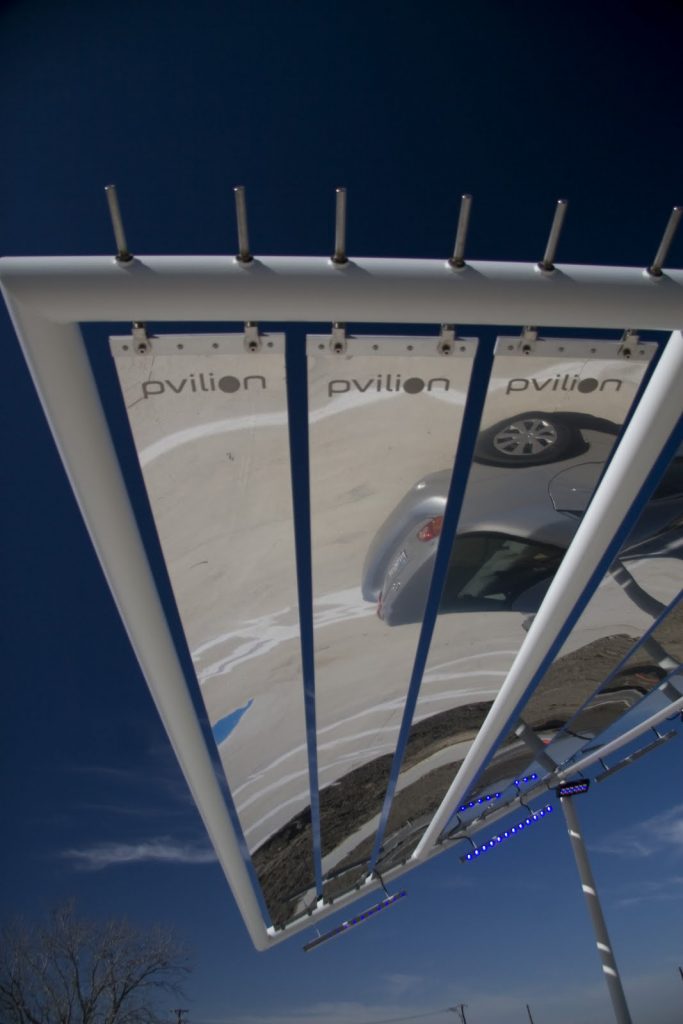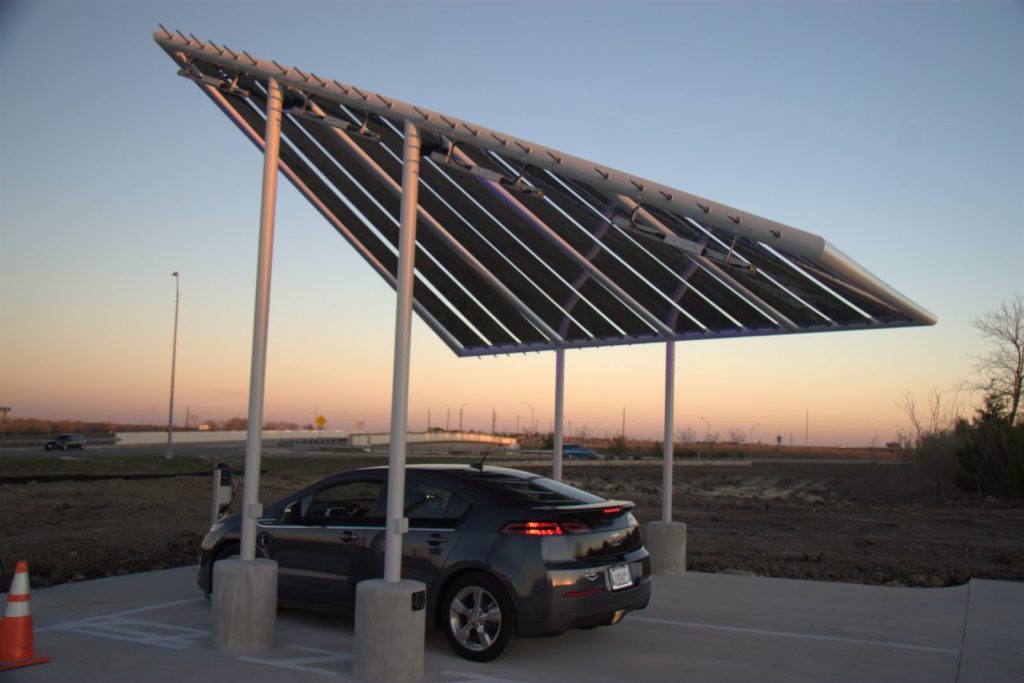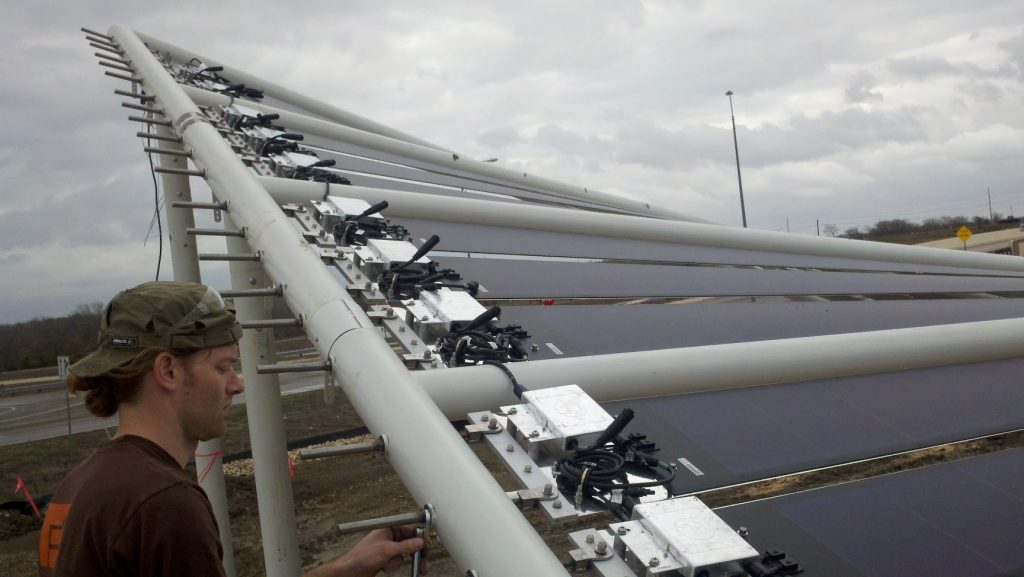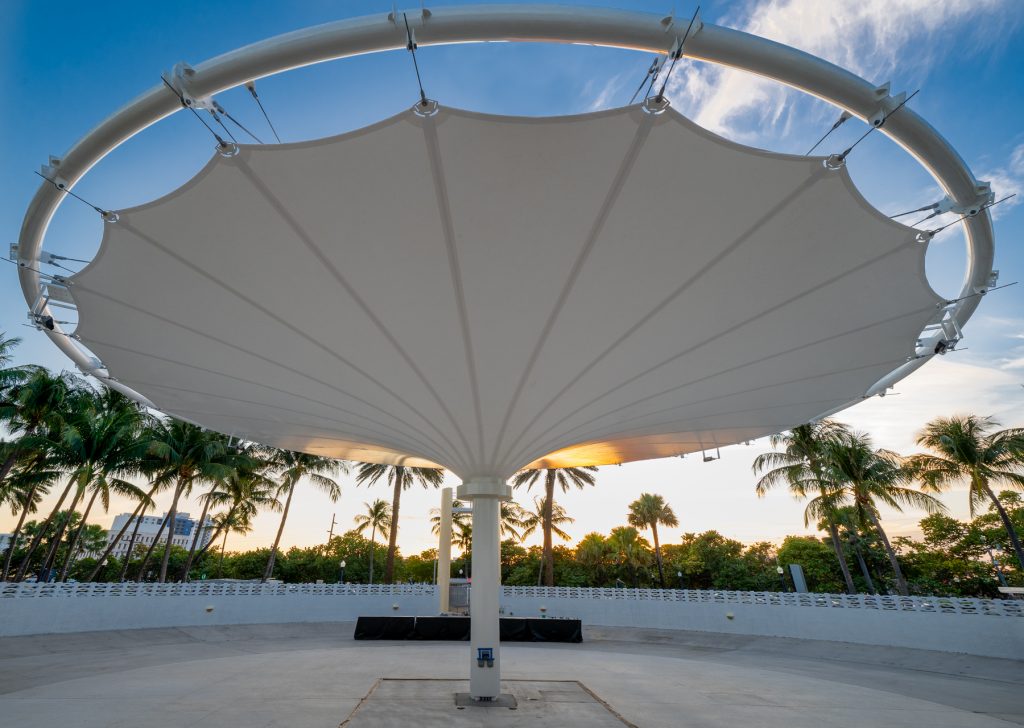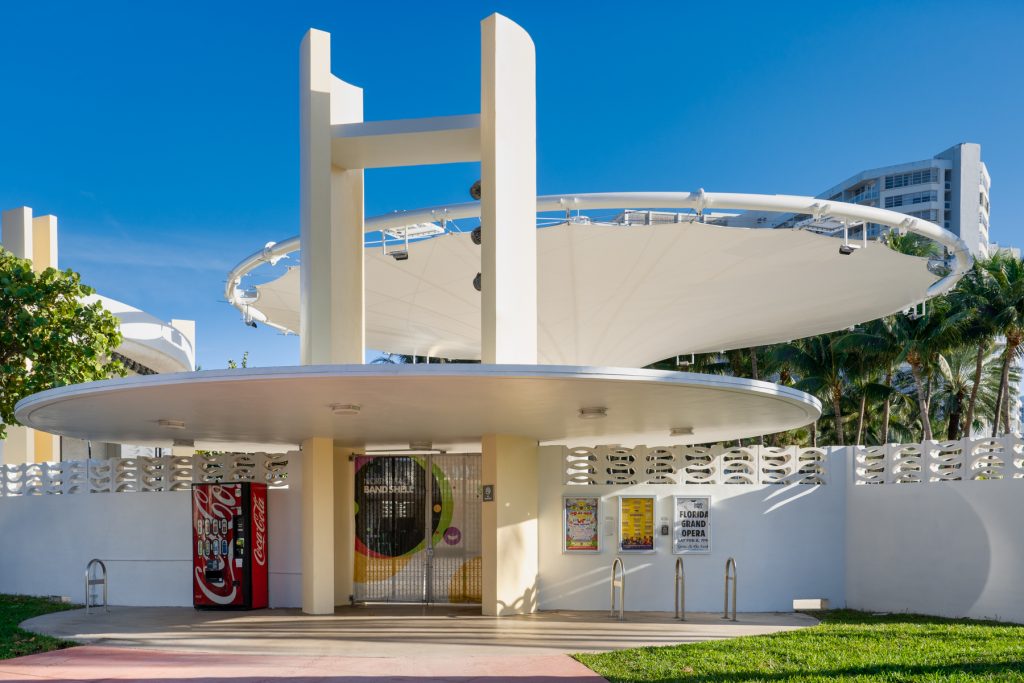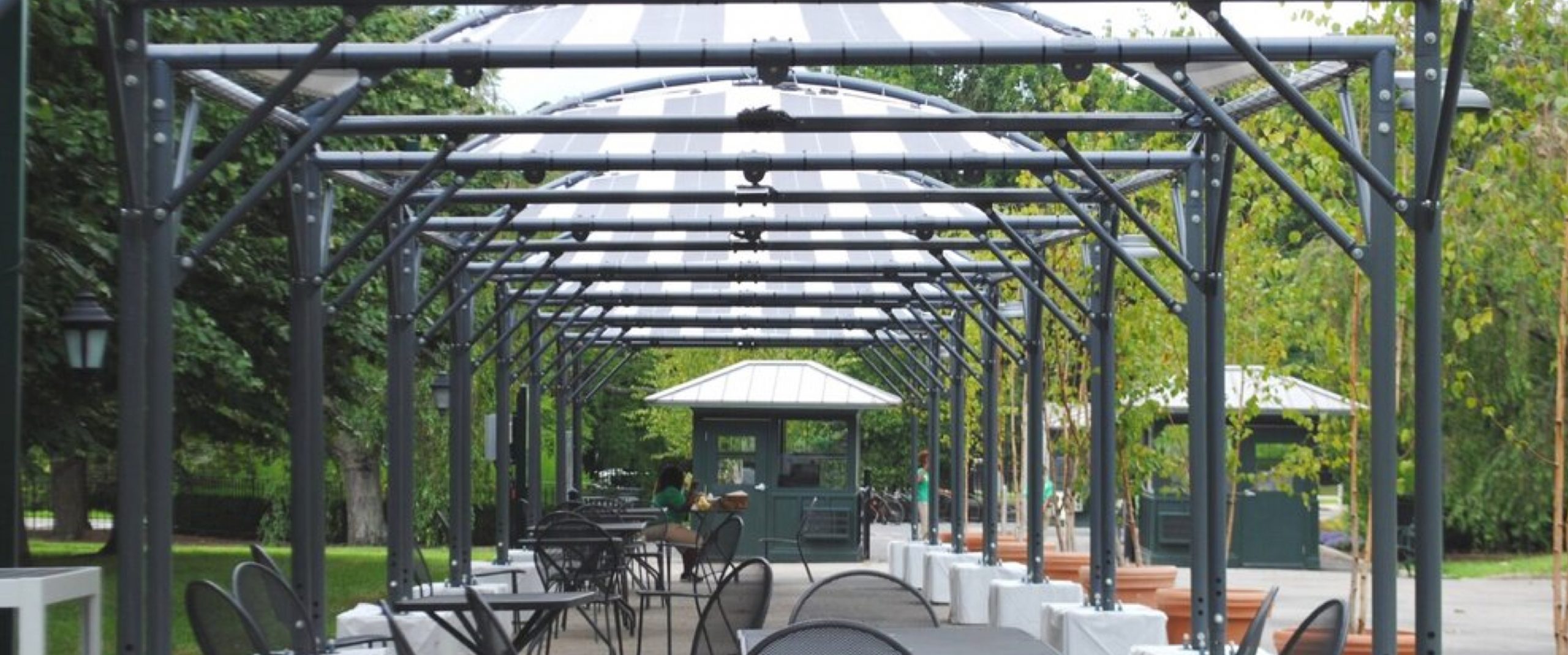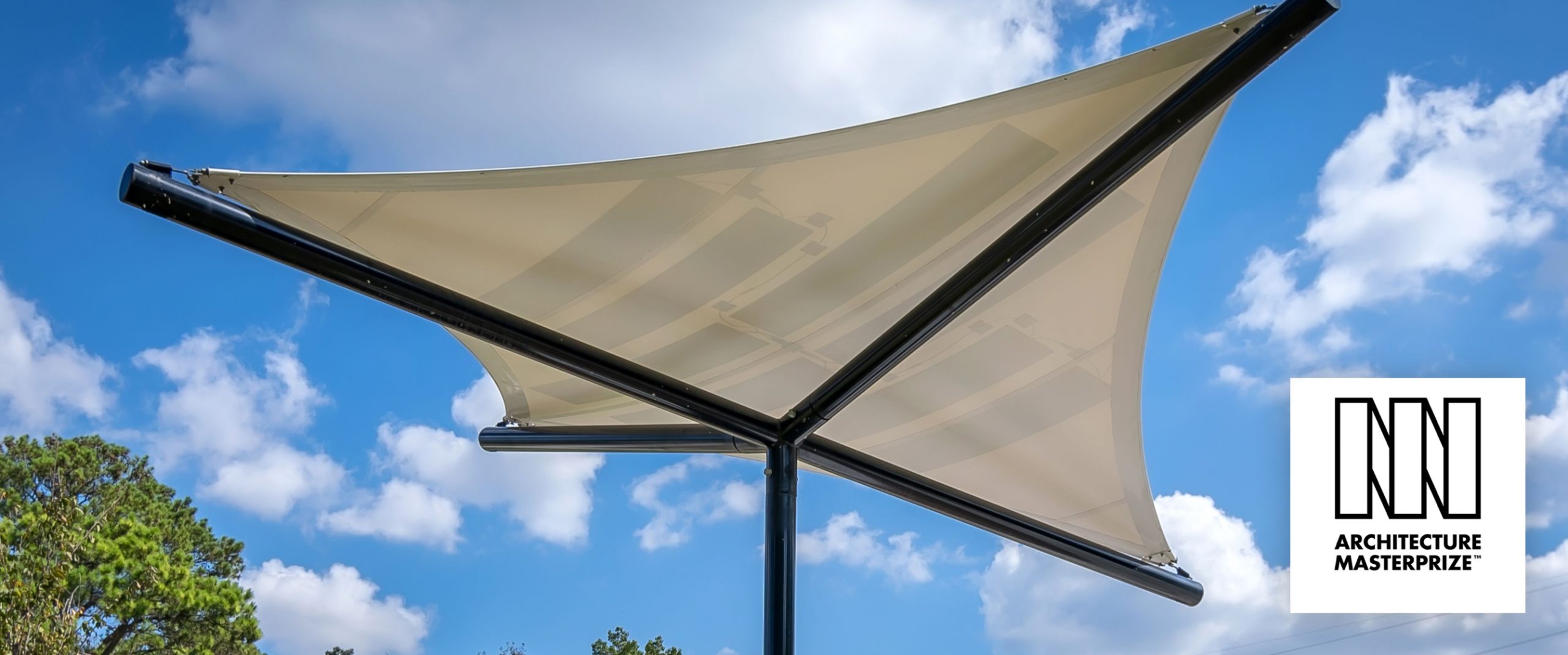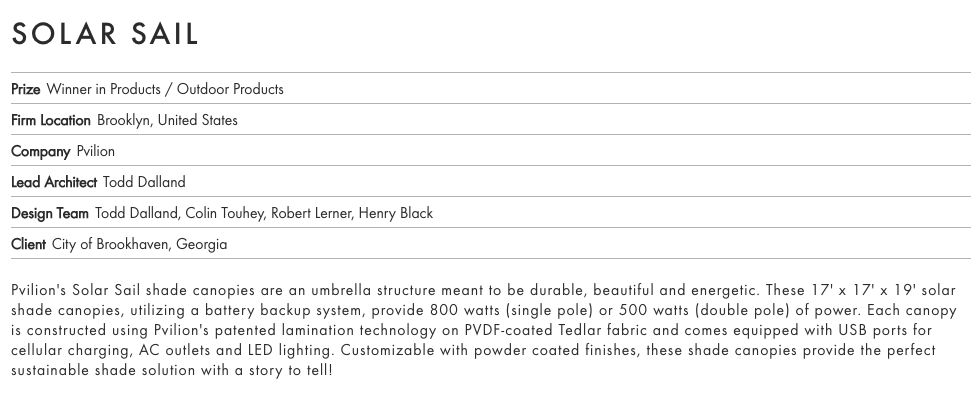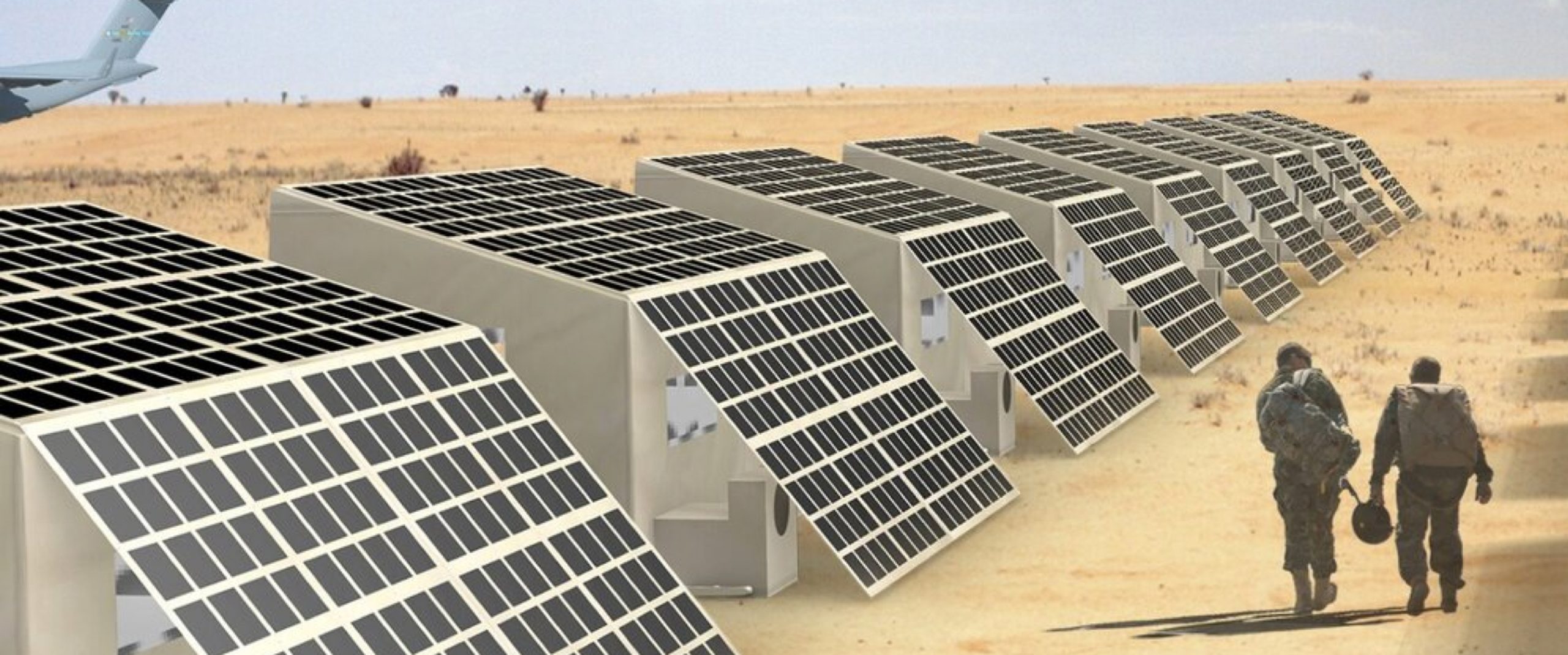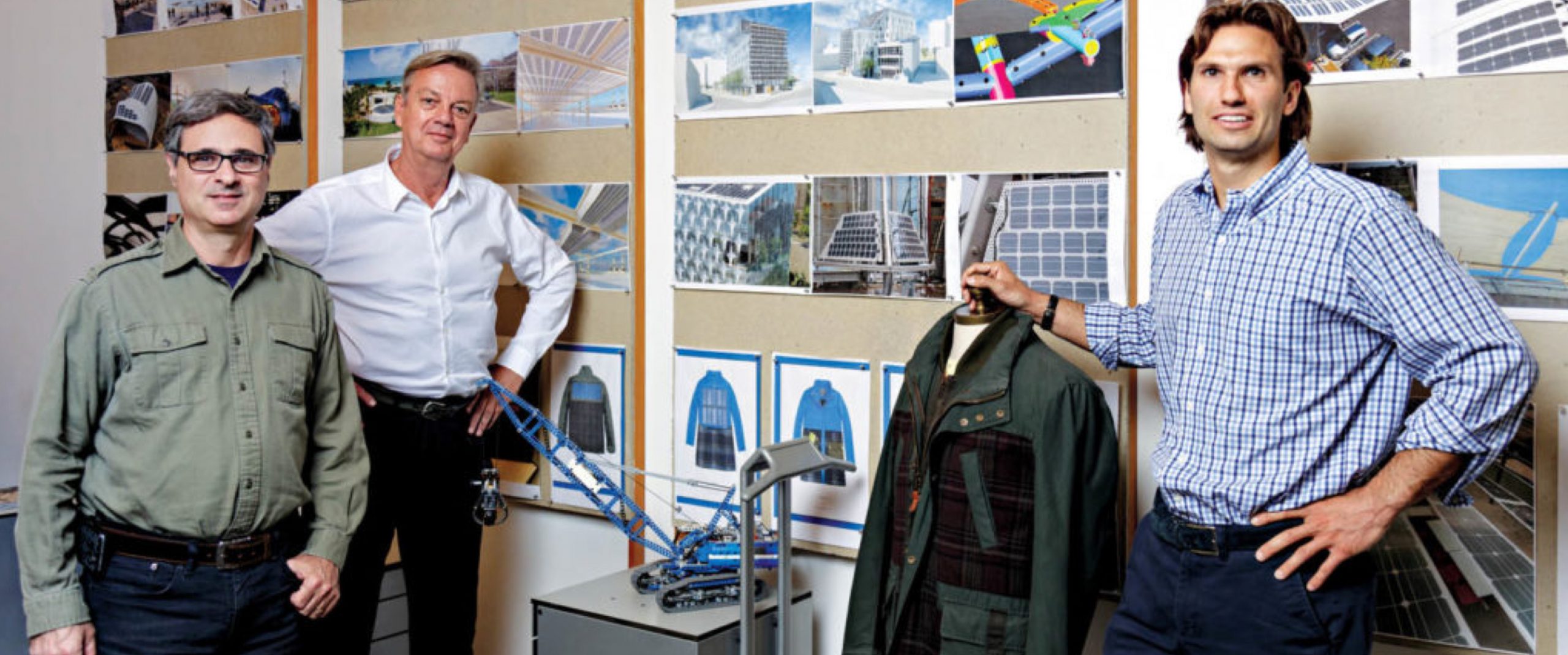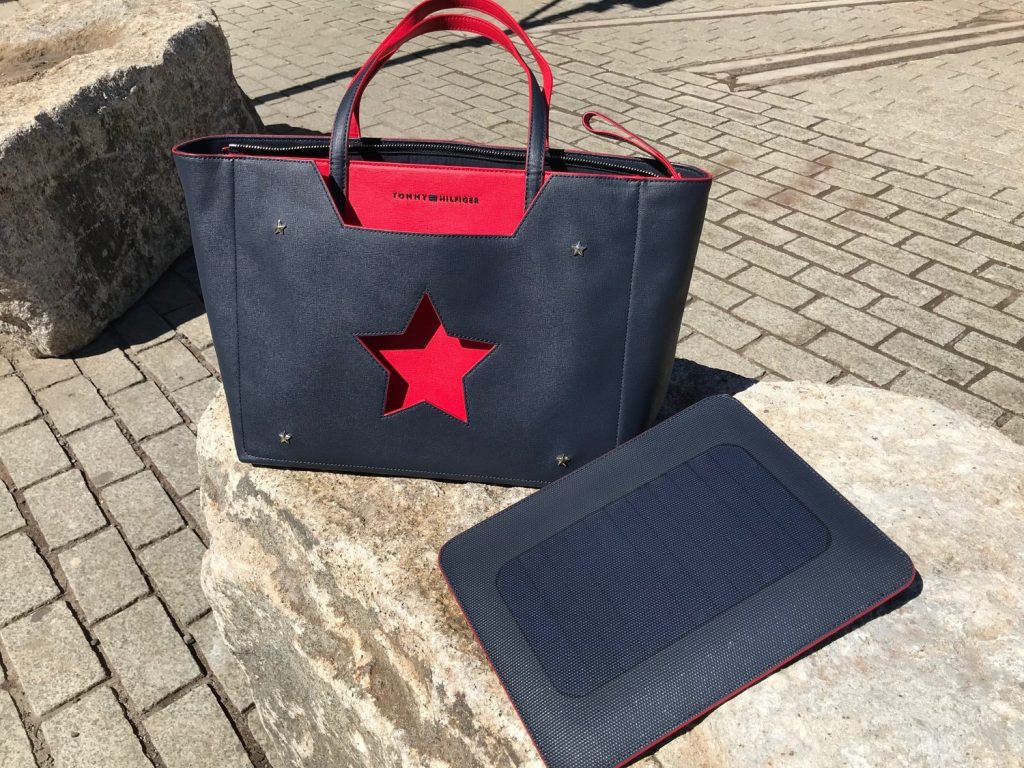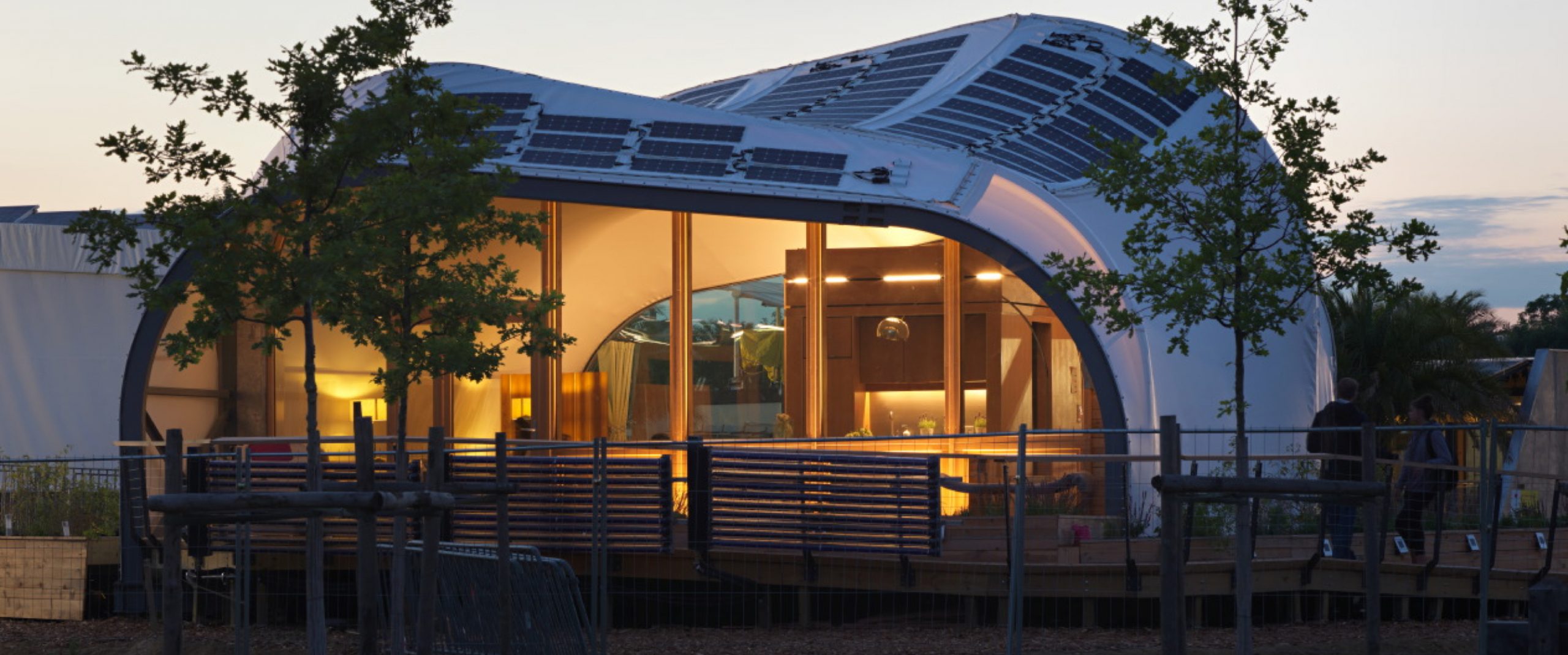Pvilion’s Colin Touhey is working to forge strategic partnerships to integrate photovoltaic technology into all kinds of fabric products.
Specialty Fabrics Review | Jill C. Lafferty | July 2019
Pvilion is the 10-year-old partnership between Touhey, an electrical engineer, and fabric structure industry veterans Todd Dalland and Robert Lerner, AIA. Dalland is a pioneering designer and inventor in the field of lightweight structures and a recipient of the Bruce Wodetzki Award—the tent rental industry’s highest honor. Lerner has led new technology development programs involving lightweight, deployable structures for NASA, the U.S. Army and the U.S. Air Force. The three connected when Dalland and Lerner were working on integrating photovoltaic cells with fabric for the U.S. Department of Defense.
“Todd and Robert had started FTL Solar and were making flexible PV fabric products and structures for military, tent rental and car park projects. Joining them as a summer intern when I was in college was an exciting opportunity for me,” Touhey says. With an eye toward expanding into architectural, commercial and consumer markets, the three became partners and reformatted the business as Pvilion in 2011.
Supply and demand
What Pvilion does is simple in theory—and complicated in reality, Touhey says. “We integrate solar cells with fabric, and we build fabric products that generate electricity,” he says. “Effectively, any surface, any fabric that is getting hit by the sun, can be a fabric that generates electricity.”
While it may seem futuristic to the general public, the Pvilion team says the technology is proven in the field. Dalland and Lerner worked on the first photovoltaic tent more than 20 years ago, which led to research and development funding from the U.S. Army. That helped show the world that it can be done, Lerner says.
“You need to be patient when you are developing new technology and trying to get it out into the market and sell something to people who have never seen it before. A lot of people just don’t want to be first one to do anything,” Lerner says. “I’ve always said we are a little bit ahead of our time; we are usually five years ahead, which is better than being 20 years ahead of your time. We know what technologies are coming, and we are leaders in bringing new technologies to market.”
And there’s no doubt about the market demand for mobile energy generation—or that fabric has the potential to meet that demand. Take the global proliferation of the mobile phone. Technology conglomerate Cisco predicts that by 2020, more people will have a mobile phone than will have electricity in their homes, with the Middle East and Africa expected to have the highest growth rate in mobile data usage.
“Every person in the world has a phone that needs to be charged,” Touhey says. “And every person in the world has access to fabric. They might be in a tent, they might have an awning, they are definitely wearing clothes. The access to phones has driven the requirement for mobile power.”
Market integration
Pvilion’s strategy has been to build turnkey products—a carport for electric cars, a canopy for a mobile coffee cart, a solar-powered pedestrian bridge, and so on. But recently, the company has begun seeking out partners that are the best in their market segment, with the goal of integrating flexible PV technology into a variety of existing end products.
“If we want to launch an event tent, we’re going to be working with the best and brightest event tent manufacturer to integrate our technology into their supply chain,” Touhey says. “We feel very confident in our technology and our ability to take our technology to different markets with strategic partners.”
One market application Touhey would like to pursue—for which the right partner or opportunity has yet to come along—is large industrial buildings that can’t support the weight of traditional solar panels but would benefit from energy generation and solar tax incentives.
“We’ve started to have preliminary conversations with potential partners,
and we are very excited about that idea,” he says. “We’re pursuing the large-scale roll-out of the technology on our own, with partners, and with the help of grants from New York State.”
While a strategy of finding partners has benefits—such as funding and not reinventing established products and processes—this approach also comes with risks.
“It has been a challenge to share what we do while protecting it at the same time, even with patents and intellectual property protections,” Touhey says. “In the last year, almost 18 months, we’ve just said, ‘Look, in order to make an omelet, you’ve got to break some eggs,’ and we’ve got to be showing this to partners who can scale this in ways that we couldn’t even imagine.”
Beyond specific markets, Pvilion is focused on developing manufacturing processes that are more dependent on robotics and less on labor, thereby reducing costs and increasing volume. The technology isn’t at the commoditization point—yet—but Touhey envisions that with wider adoption, Pvilion will be known as “the technology in an everyday product,” along the lines of brands like Gore and Intel.
Dalland predicts that manufacturers in all IFAI market segments will eventually adopt photovoltaic technology, creating products that serve their original function while also generating electricity.
“Fabric-based product makers will become electricity business experts,” Dalland says. “For me, there is nothing more beautiful than a flexible solar fabric product that makes electricity and money from day one.”
New ideas
While there is some overlap in the responsibilities of the three partners, Touhey is the most focused on big-picture strategy, forging partnerships and reaching new customers. The challenges Pvilion faces are the same challenges faced by any project-based small business, he says.
“It’s really hard to wait for customers. You have to really fill your pipeline and be ready for a year out or two years out because there are dry spells, and you have to be able to weather that,” he says. “We get a lot of projects where we get paid as we complete them. Well, you’ve got to have cash up front to build it. That’s always a challenge for any small business that’s growing—how much to invest in other people’s projects, and how much to rely on customers to be funding you.”
But being a small and nimble company committed to a technology rather than a specific market means that the Pvilion can make decisions quickly, entering a new market and developing a new product in a matter of weeks or months, he says.
“Running a business is exciting,” Touhey says. “You are constantly on the edge. It’s up and it’s down; there are new innovations. We are constantly coming up with new ideas. Every day we have a new idea about how to make our product better. It’s rewarding to take the ideas in your head to a sketch on paper into a concept that becomes a reality in the field.”
For more information contact us here
To see the original article click here
